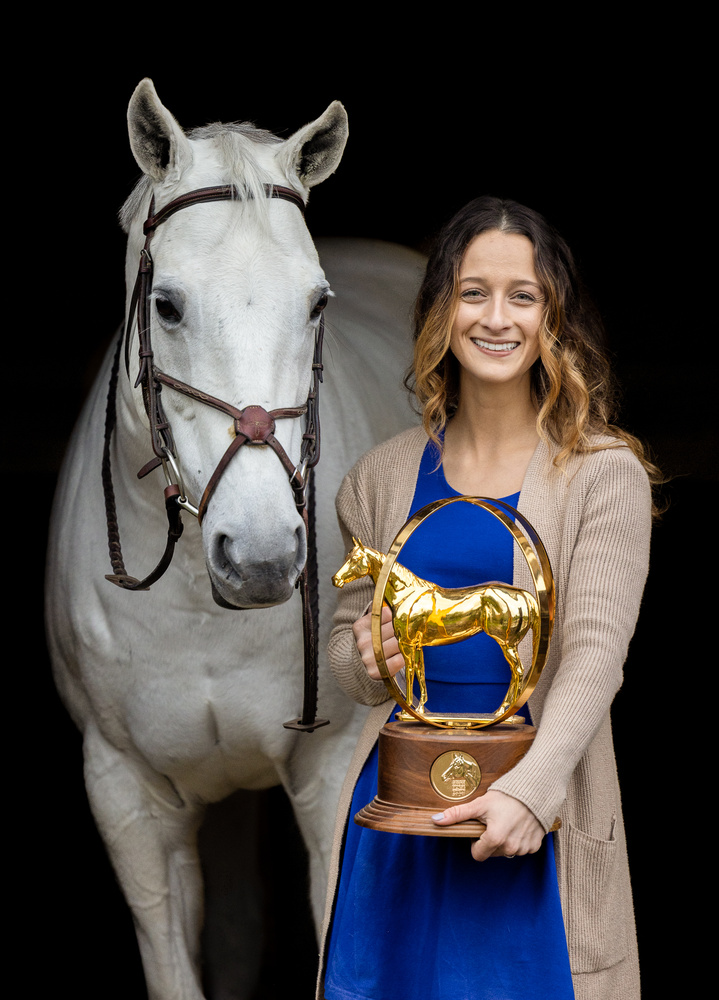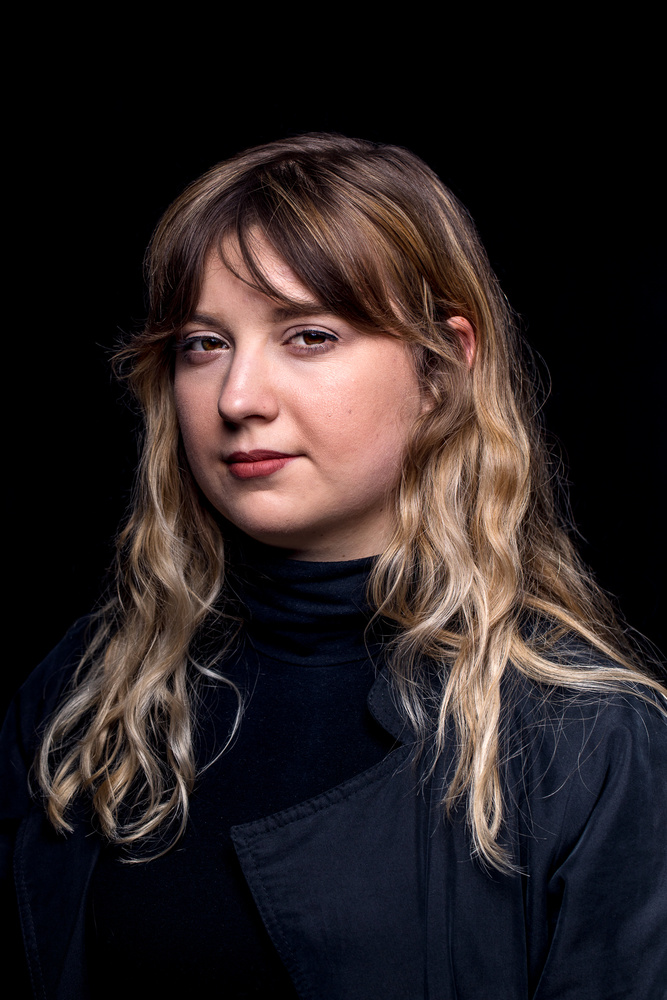Limited Versatility
I know, 50mm lenses are supposed to be able to jump into a variety of situations with ease and produce competent images, and it is certainly true that they can. However, they are often the jack of all trades and the master of none, living somewhere in between or on either side of the better option(s). For portraiture, they are great for a half-body shot, but if you want to get in for a traditional headshot, it is likely better to bump up to 85mm. For landscapes, they are a bit too long to capture a decent amount of the scene and too short to really isolate single elements. Sports? Nope. Wildlife? Nuh-uh.

Of course, I am not saying that 50mm lenses are totally unsuited for such genres and applications. Rather, I am saying there are often better, more purpose-specific options. Rare is it that 50mm is the ideal focal length. For landscapes, grab that 24mm or 24-105mm zoom. For portraits, grab an 85mm or 70-200mm if you want to be more versatile. Sports and wildlife? Head to the supertelephoto range.
Limited Perspective
50mm is often touted as the focal length that is closest to the human eye, giving images a natural look. And while that may be generally true, I would argue that is a deficit, not a boon. If we all see with "50mm" lenses all day, every day, that makes it much harder for a photographer to create images that catch the viewer's eye by virtue of their novelty. People instantly respond to a 24mm or 200mm shot because it is so different than what they are used to seeing, even if the untrained eye can't articulate quite why that is.

Of course, you might argue that it is on the photographer to find other ways to be creative, but to that, I say: why not give yourself a leg up to start? Nor is this to say you can just slap on a more unusual focal length and use that as a crutch; no matter what you use, all the fundamentals of a good photograph — composition, posing, lighting, editing, etc. — must still be present. A bad photo is a bad photo whether it is shot at 10mm, 50mm, or 400mm.
Modern Zoom Lenses or Other Primes Are Often a Better Choice
50mm lenses were once considered a mainstay in almost every photographer's kit. I'm greatly overgeneralizing lens design, but in the simplest terms, the more extreme the focal length, the harder it is to design a lens that produces high-quality images, and the more expensive it will be. That is partially why, for a long time, the "nifty fifty" was so desirable, as one could get a lens with a wide aperture that produced decent images for around $100-200.
Lens design has advanced by leaps and bounds even in just the last decade, and there are now fantastic options at just about every focal length and price point. No longer is the 50mm the most prominent "cheap but good" option; you can find something that fits your budget almost anywhere in the range.

Taking that further: the paradigm used to be that many photographers would carry zooms for versatility and convenience and primes for wide apertures and image quality. However, modern zoom lenses continue to push the bounds of image quality and wide apertures, and that advantage held by primes has largely evaporated, at least in some cases. In particular, I am thinking of my Canon RF 28-70mm f/2 L USM. Is it expensive? Yes and no. In absolute terms, it certainly is. However, when you consider the fact that I no longer own any other lenses between 14mm and 85mm, its value becomes clear. Its image quality easily keeps pace with all but the best primes, its f/2 aperture is more than enough for 99% of situations, and its convenience makes it way more appealing to me than carrying three or four equivalent primes. Even more modest 24-70mm f/2.8 lenses of the world have taken huge strides forward, and the high-ISO capabilities of modern cameras mean that those f/1.4 apertures are not as necessary as they used to be.
I'm Bad at It
It would be disingenuous to not mention the other reason I don't like the 50mm focal length: I am simply not good at creating compelling images with it. I do not find it inspiring or fun to work with, and it is a constant struggle to find a way to be creative with such a lens for me. Such a lens is functional at best: good for low-light situations where I need a wide aperture maybe, but even then, I will probably reach for that aforementioned 28-70mm f/2. In fact, I don't even own a 50mm lens anymore.

Of course, the need to be inspired by gear is undoubtedly a deficiency in my own technique and creativity; I will be the first to admit that. However, we all have our weaknesses and blind spots, and it seems no matter how many times I buy a 50mm lens and force myself to shoot with it, I just hate the experience and end up selling it a few months later. Many other photographers will cringe reading that, as they swear by the 50mm. That is the beauty of creative pursuits, though; we all filter the world through our own unique perspectives and strengths. Just don't filter mine through a 50mm lens, please.
Your Thoughts
Do you like the 50mm focal length? Is it a go-to for you, or has it lost some of its usefulness with the advancements in modern lenses and cameras? Let me know in the comments.







48 comments. No females...
an interesting and very valid comment
They're not interested in our flame wars. xD
The best lenses is the one with you. But I was always really fond of my old canon 35.
Your lack of comprehension is not my concern.
Maybe they approach photography from a more practical perspective. As in, use the lens that works for you.
I'm a beginner photographer as of Christmas and I have a 75-300mm and an 18-55 mm lens, and after reading this ive realized that I also dont really land in the 50s much lol. I've recently realized how much better most portrait shots will look with 100mm and how much better most landscape shots look if you get a little closer with a wide angle. I've even found that if I'm photographing landscape at the right distance for 50 - 55 to be very much applicable for framing I'd rather scoot back a bit and switch to my 75 - 300mm lol.
Often i find a 50 boring compared to 35. Of course that's me (my preference and style). I love adding context to my portraits. I can repeat the article's "i'm bad at it" maybe. :)
For me the 50 is like "a short 85"; i will grab it when the space is too limited for 85. I love the difference between 35 and 85. 50 is a good 1 lens solution but also jack of all trades master of none.
I can't do without 35 for my location portraits and i an't do without my wide zoom for travel and landscape.
To me this article makes a non-point. You could pick any focal length, and point out its limitations for each genre of photograph.
Experienced photographers choose the focal length, speed, MF or AF, any other lens attribute, that accomplishes the result they seek in each photographic assignment.
Or in some cases, it may simply be the self-assignment of the challenge of utilizing equipment available. Often I will give myself an assignment to go out walking with a particular lens and come back with some photos that are pleasing (to me). One of my favorite combinations is Nikkor 45mm f2.8P on a Df body. Almost a nifty fifty. Maybe an alive forty-five?
I have a number of expensive 'L' (pro) F4 zooms. As an amature I can't justify the extra cost (or weight!) of faster pro glass.
So I also have the fast and very cheap 35 and 50 lenses. Just the cheapest way to get the speed on the rare occasions I need it.
In reality I think I reach for the 35 more often than the 50 though. Also the 35 or 50 turns my R6 into an acceptable street camera from a size point of view.
Well, that explains why my 50 f/1.4 never gets used.
I bought it in 2008 and think I used it on less than a dozen shoots over 15 years.
My 50mm never gets used, either. I know I have one lying in some camera bag somewhere, but I don't even bother bringing it along with me on photo trips or day outings.
I have a 24-105mm zoom, and while I use that lens quite a bit, I rarely take any photos in the 45mm to 55mm range. Just almost no use for that part of the focal length range for me and what I shoot and the way I like to shoot it.
I need my 55 f1.8 when i want to make interior portraits (and my 85 is too long). That's THE purpose of the lens imo.
I sold them even notice what my focal length is. I often use the widest lens I can for certain types of photos and on others I might even go with the most telephoto lens I have. Yesterday I was doing some photos in my own garden and I really didn't pay attention to the focal length once I got the shallow depth of field I wanted. I guess I would have to look at the image data again and see what the focal length was.
I find 50mm to be less useful and versatile than 35mm, but it depends on the particular picture. However, if I shoot through a 50mm lens and keep both eyes open, what I see through my right eye (through the camera) is smaller than what I see through my left eye. The point of equivalence in my case is around 65mm. It's a myth that 50mm corresponds with human vision - unless my eyes are weird.
I'm also in this camp. For wider shots, I start at 35 and go down from there to 24 and lower. Then I start at 85 and go up. There's a big void for me between 35 and 85 and I find the range is too middle of the road to be of any benefit.
I don't love the 50mm lens. It's just too boring for me. I like the 35 and the 85.
I wanted to take a few night shots, so I dusted off my 50mm 1.4 lens and wandered out into the night. After uploading the images, I removed the lens and reattached my beloved 35mm 1.8. onto my camera. I went back out the next night and took a few more images. The images from the 50mm weren’t that bad, but the focal length was just too tight for street photography. I’ve thought about selling my nifty fifty, but I know I wouldn’t get much for it. It’ll just go back to the bottom of my camera bag for now.